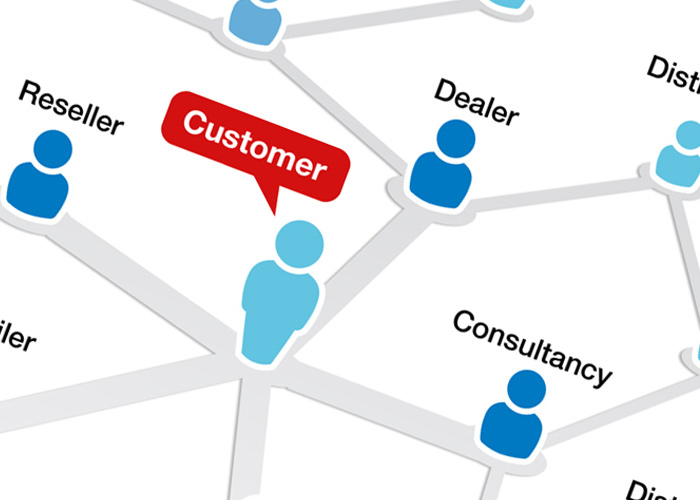Indirect sales are performed with the help of intermediaries. There is no personal contact between the seller and the buyer. This type of sales is a widespread practice in email marketing. After registering with SendPulse, you can make use of this method absolutely for free.

In this video, Hans Peter Bech provides a comparison of direct and indirect sales approaches and explains how to make the latter work in your favor.
Types of Indirect Sales
- Distribution. Transfer of rights by a producer to sell their products to small wholesale and retail organizations.
- Merchandising. A competent arrangement of the goods at the shop-windows. Therefore, chewing gum, sweets, chocolates are laid out next to the cash desks: while adults wait in line, sweets lure children to ask for a product. The same is with the essential goods — they are above eye level, because, first of all, the buyer will pay attention to the goods located below. The type of product and how it is presented to the consumer depends on the sales ratio.
- Franchising. This is a "lease" of a well-known trademark. Buying a franchise and paying interest to the brand owner, the franchisee reduces the number of problems: they have particular tactics of doing business and their clients. Bright examples of franchising are Subway, McDonald's, Lukoil.
- Dealership. In this case, the intermediaries of the company are special agents — dealers. Buying goods at wholesale prices, they resell it with an extra charge at retail to other firms. This differs from the distribution in smaller volumes of purchases.
There is no personal contact between the seller and the buyer. Sales are carried out by third parties.
Advantages of Indirect Sales
- Increase in the sales network (up to global);
- Raising the level of products distribution;
- The efficiency of the current work;
- Knowledge of the state and prospects of the markets;
- Expansion of the target audience;
- Minimum costs for the organization of jobs.
Disadvantages of indirect sales
- Break of personal connection between the seller and the buyer;
- Inability to monitor and track the goods independently;
- Dependence of the company's reputation on the behavior of the intermediary.
Indirect Sales in Email Marketing
Marketers do both direct selling and indirect via email campaigns. In this article, we told how to sell directly.
To sell indirectly, there should be a medium between an email and a recipient. It can be your sales representative — for example, a user-specified their birth date during the subscription. Then, call them with some warm wishes and send a birthday email with a special offer afterward. This way, if they buy from this email, the sale will be indirect.
If you are a small business owner, use our free pricing plan. Send up to 15,000 emails every month to 500 or fewer subscribers. Personalize, segment, and A/B test your campaigns for better engagement.
References
- The article "Indirect sales" on Investopedia defines indirect sales, explains the way this approach works, and describes its strategies.
- The article "Building Indirect Sales Channels" on Business Insider takes into consideration indirect sales channels.
Last Updated: 08.11.2023


or